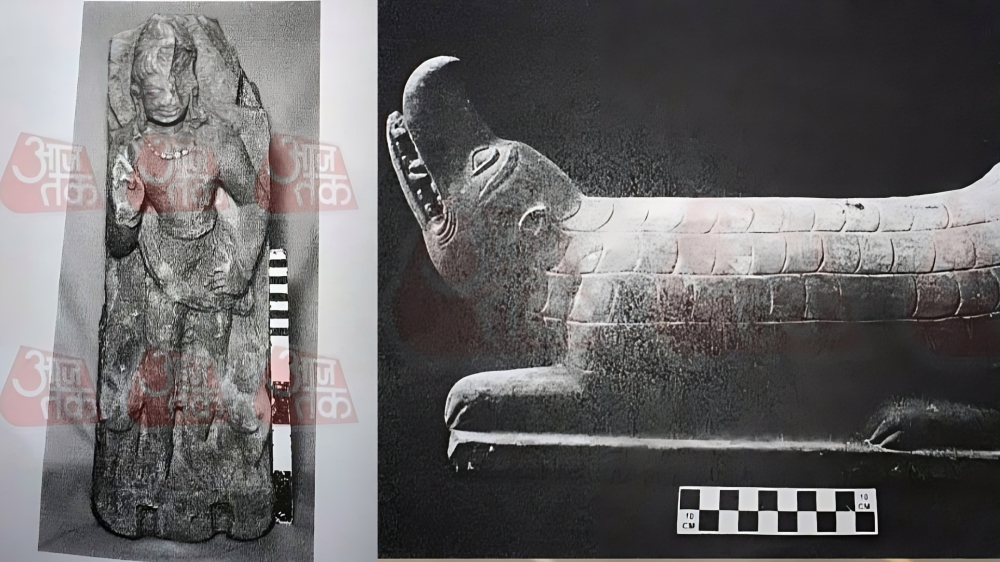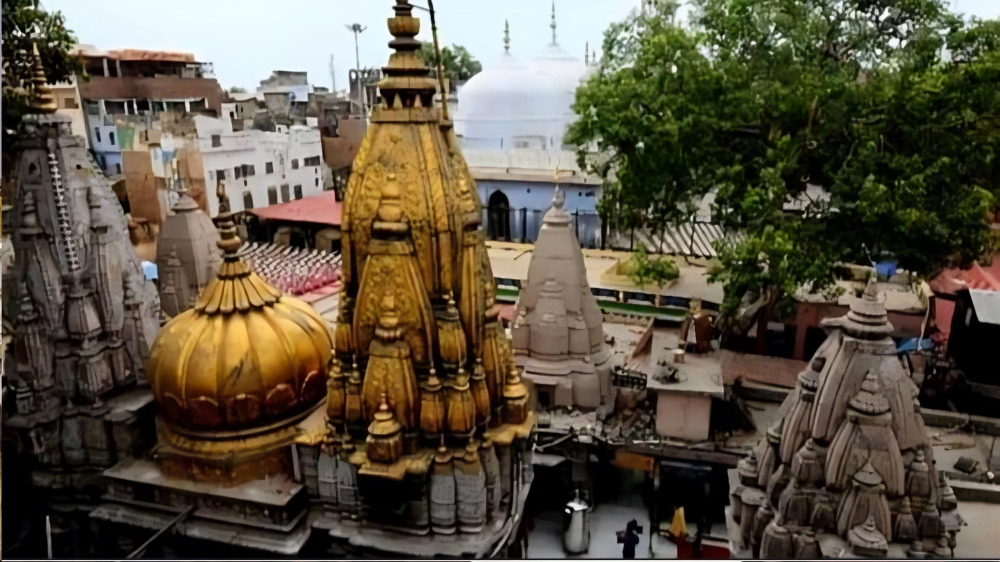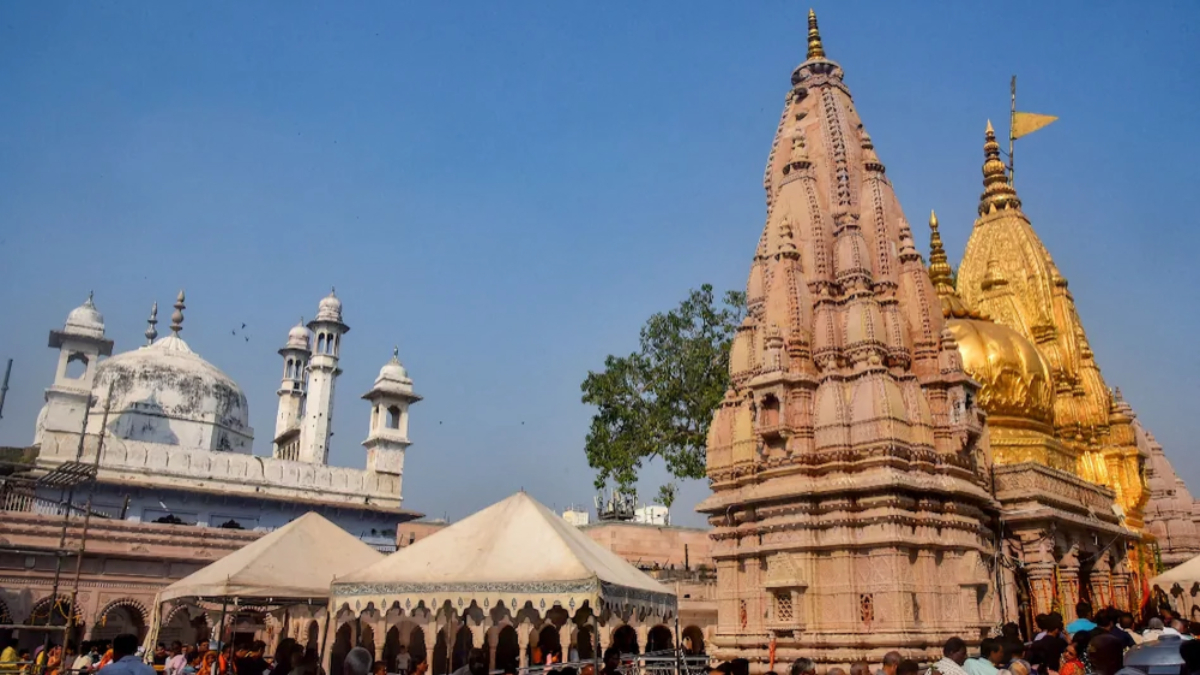Worship has commenced in the Vyas basement of Gyanvapi in Varanasi, following the recent court ruling.
After a gap of 31 years, the order by District Judge Ajay Krishna Vishwesh has allowed the Hindu side to perform puja in the basement of the mosque. This decision has reignited the debate surrounding Gyanvapi across the nation. Gyanvapi holds great significance for the Sanatani community, as it is not only revered in their ancient texts but has also been extensively documented by renowned English historians in their books on Kashi.
Gyanvapi is frequently mentioned as a significant place of pilgrimage in ancient Hindu scriptures, which are replete with tales of divine blessings and spiritual exploration. Likewise, scholars of English history who have delved into the city of Varanasi concur with these texts. Renowned writers such as EB Havell and Edwin Greaves have provided captivating narratives of Brahmin priests seated by a well, graciously offering water to devout pilgrims.

There are references to six Vaapis mentioned in the Sanatan texts, with Gyanvapi being one of them. According to the Kashi section of Skanda Purana, it is believed that Gyanvapi was constructed by Lord Shiva himself. The Linga Purana also mentions the existence of six major Vapis, or wells. The first one is called Jyestha Vapi, followed by Gyan Vapi, which derives its name from being created with Lord Shiva’s blessings. It is said that by consuming its water, devotees attain enlightenment and acquire various forms of knowledge. The third Vapi is known as Karkotak Vapi, also famous as Nagkuan. The fourth Vapi is called Bhadravapi, while the fifth one is Shankhachud Vapi. Lastly, the sixth Vapi is referred to as Siddha Vapi.
In the pages of his book, English author E.B. Havel pens…
The book “Banaras-The Sacred City” presents two theories regarding the origin of Gyanvapi. According to the author, the legend associated with this well tells the story of a severe drought that plagued Banaras for twelve years, leaving the city in a state of desperation. Eventually, a revered sage, who was among the great Hindu saints, grasped hold of Shiva’s trident and buried it in the ground at this very location. Instantly, a powerful stream of water surged forth, relieving the city from its hardships. Upon hearing of this miraculous event, Shiva chose to reside in the well and remains there to this day. A different account, which has a stronger historical foundation, recounts that when Aurangzeb destroyed the ancient Vishveshvara temple, a priest rescued the idol and cast it into a well. The English writers have provided an insightful portrayal of the Brahmin who would sit by the well and offer water to the pilgrims. Additionally, both authors have documented the presence of smaller temples and grand statues of Ganesha.

Havell made reference to Gyanvapi as follows: E.B.
In his book “Banaras-The Sacred City,” Havell mentions that Gyan-Kup, also known as the Well of Knowledge, is located in the expansive quadrangle between the Golden Temple and Aurangzeb’s Mosque. This area was built on the site where the old Vishveshwar Temple once stood. The well is adorned with a magnificent Saracenic pillar, which was constructed in 1828 by the widow of Daulat Rao Scindia of Gwalior. Adjacent to it stands a massive stone bull, known as Nandi. The throngs of pilgrims visiting this place always find plenty to observe and learn. A Brahmin is stationed near the well, ready to offer a sip of water to each pilgrim using a ladle called doi. The Colonnade, a covered walkway, is a popular spot for pilgrims to rest, and it is not uncommon to see them carrying pictures and symbols of their patron deity. Additionally, a small temple is set up on the floor where worship is conducted according to the prescribed rituals.
Here is how Edwin Graves depicted Gyanvapi.
In his book ‘Kashi the City Illustrious’, Edwin Graves describes the sight that greets visitors as they descend the steep path of Gyan Bapi. The first structure that catches the eye is Aurangzeb’s Mosque, which stands on the site where the old temple of Vishwanath once stood before being destroyed by the Muslims. Despite its aesthetic appeal, the mosque is not frequently used and has long been a source of discontent for the Hindus, as it occupies a central position on what they consider sacred ground. This location was also the site of a disastrous conflict in 1809. It is likely that there are remnants of the old Vishwanath temple both behind and in front of the mosque.
In this book, he further describes the presence of a simple yet sturdy pillar to the east of the mosque. This pillar serves as a cover for the Gyan Bapi, also known as the well of knowledge. Enclosed by a stone wall, a Brahmin sits upon it. Devotees approach the well, offering flowers, and receive a small spoonful of water from the Brahmin’s hand. They apply this water to their foreheads and eyes, and some even take a sip before departing with contentment. Adjacent to the pillar, on its north side, stands an imposing statue of a bull, which represents Nandi, the sacred bull of Mahadev. This bull is held in high regard. In close proximity to the bull, there is a temple adorned with the figures of Gauri Shankar, namely Parvati and Mahadev. Within the same open area, one or two other small temples can be found, along with a large statue of Ganesha, known as the well of knowledge. This placement is fitting, as Ganesha is revered as the god of wisdom.

